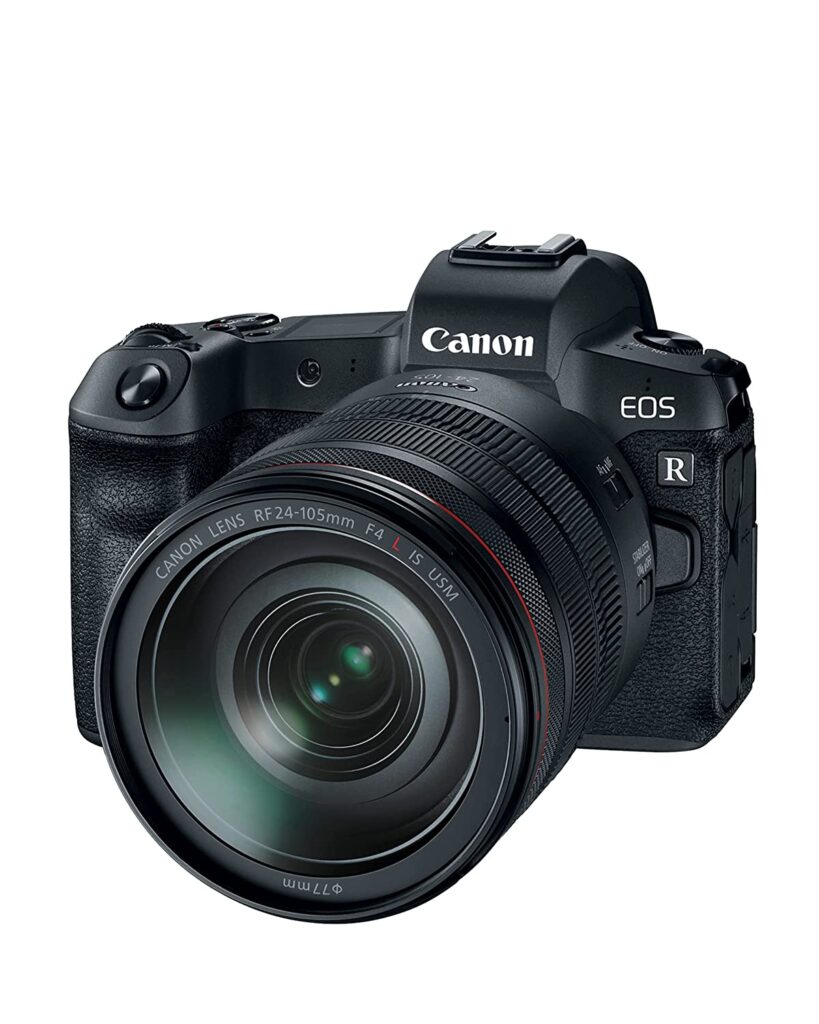We go in detail to understand DSLR and mirrorless cameras.

The mirror in a DSLR reflects light up to the optical viewfinder via a pentaprism. So the image is the right way around. An advantage of this is that it’s instantaneous. With an electronic viewfinder, there is always going to be some inherent lag. DSLR viewfinders work at the speed of light – you can’t get faster than that.
The electronic viewfinder (EVF) in a mirrorless camera employs a compact, high-resolution version of the same display technology. As for for for for for for the LCD screen on the rear of the camera, One advantage of this is that it enables you to see what the camera sees. Even in conditions too dark for the unaided eye to see anything.
The latest mirrorless cameras, such as the EOS R7 include advanced features for content creators like 4K 60p video with intelligent subject tracking. Something that isn’t offered in DSLRs such as the EOS 7D Mark II or EOS 90D.
Image quality: do mirrorless cameras take better photos?
Capturing images using the two systems isn’t radically different when it comes to the actual final image quality. But it’s everything that goes around it that really makes the difference.
For example, with the RF mount, one of the benefits of high-speed communication between the lens and the camera is that when you have optical problems like diffraction and aberration. We can do in-camera correction of those in real-time. This instant processing means that in some ways you’re actually getting better image quality out of the new cameras.”
Similarly, in some situations, mirrorless cameras, such as the EOS R7 with its continuous shooting speed of up to 15fps using the mechanical shutter and 30fps using the electronic shutter with full autofocus tracking. There is more likely to produce consistently usable images. Than the EOS 7D Mark II or the EOS 90D, both of which have a maximum continuous shooting speed of 10fps.
Autofocus: DSLR and Mirrorless
EOS R System mirrorless cameras including the EOS R5, EOS R6, EOS R7 and EOS R10. Use Canon’s latest Dual Pixel CMOS AF II autofocus system. In which every pixel in the sensor is used for both focusing and imaging. Compared with the specific point-based phase detection sensor focusing through the viewfinder for cameras such as the EOS 7D Mark II and the EOS 90D.
One of the big advantages of these mirrorless cameras is the ability to select an AF point anywhere within the frame. This is impossible on a DSLR. It also allows for capabilities such as face tracking, eye tracking and animal tracking that we see in these cameras.
You can, pick up the eye of a bird in flight, and follow that around the frame – again something that is impossible for a DSLR.
That said, some pro DSLRs have a separate focusing chip. So although the overall autofocus system might be limited compared to newer mirrorless cameras, it can also be faster in certain situations thanks to that dedicated AF chip.
Mechanical shutter vs electronic shutter
A few DSLRs – notably the EOS 90D and EOS-1D X Mark III – have electronic shutters in addition to mechanical shutters, but usually DSLRs have mechanical shutters. On the other hand, all of Canon’s EOS R System mirrorless cameras have both types of shutter.
With an electronic shutter, the mechanical shutter is locked open and the imaging sensor is essentially read electronically. The biggest advantage of this is that shooting can be totally silent. Not just quieter, with the shutter damped or suppressed as it is when you select the S option available on some cameras. But completely noiseless. This can be invaluable when you’re photographing nervous wildlife, slumbering babies or the quiet parts of weddings, for example.
Electronic shutters also enable faster continuous shooting. “With mechanical shutters,” Mike says, “the fastest possible in our DSLR cameras was 16fps [frames per second] on the EOS-1D X Mark III, a high-level professional camera. With its electronic shutter EOS R10 give you the option of up to 23fps for a fraction of the price. EOS R7 shoot at 30fps matching the speed of the EOS R3 but for a third of the price.
However, the phenomenon of “rolling shutter” can be a problem when you photograph action with an electronic shutter. Fast-moving objects such as a swinging golf club or a rotating propeller can move in the time it takes for the whole frame to be read. Leaving them distorted in the resulting image. The phenomenon is greatly reduced in the latest mirrorless cameras, but mechanical shutter is recommended for shooting fast-moving action.
Shooting with electronic shutter in some artificial lighting, can be problematic if the light is out of phase with the shutter. For similar reasons, using flash with electronic shutter can result in uneven exposure across the frame.
Battery life: DSLR and Mirrorless
It’s often said that DSLRs have a longer battery life than mirrorless cameras. Mostly because a mirrorless camera’s electronic viewfinder requires power while a DSLR’s optical viewfinder uses none. In practice, however, battery life depends a lot on how you use the camera. Using flash, for example, will consume more power on both types of camera. While using the LCD screen on a DSLR typically consumes more power than using the LCD screen on a mirrorless camera.
A mid-range DSLR EOS 90D offers 1,200 shots or more with the viewfinder and 450 with the LCD. While the mirrorless EOS R6 delivers 380 shots with viewfinder or 660 with LCD in its highest performance/most responsive mode. In the power saving mode it’s 500/770 using the EVF/LCD respectively.
The difference is even greater at the pro level. If you stick to the viewfinder on the EOS-1D X Mark III. For example, you could shoot 2,500 images before the battery runs out. But this falls to 600 images if you rely on Live View. As compared with the mirrorless EOS R3′s 620 shots with viewfinder and 860 with LCD.
So if you prefer to use the rear LCD screen, mirrorless cameras give you more shots on a single charge.
DSLR and Mirrorless: making a choice
Both mirrorless cameras and DSLRs have their strengths and weaknesses. Which is better for you depends largely on the type of photography you do. The advantages you want to have when using your camera/lens of choice.
Seeking for lightweight camera with fast frame rate for travel photography ? then a mirrorless camera such as the EOS R10 may be ideal. If you want to use next-generation RF lenses.
Then the mirrorless EOS R System is for you, with accompanying benefits including in-camera image correction and AF tracking performance. Plus the capability to use your favourite EF lenses thanks to the range of EF-EOS R Adapters.
If you want to preview your image in the viewfinder with shooting settings applied, then a mirrorless camera’s electronic viewfinder will suit you. But Live View on the rear LCD screen of a DSLR will do the same. While a DSLR’s optical viewfinder eliminates even the extremely slight lag of the fastest EVFs in mirrorless cameras. As well as delivering longer battery life.
Advanced autofocus features such as Animal Eye AF and Vehicle AF are available only in the latest EOS R System cameras. But the dedicated AF chip in pro DSLRs can be faster. EOS R System cameras give you the freedom to shoot with either an electronic or mechanical shutter. While most DSLRs feature a mechanical shutter only. If completely silent shooting is vital for you. And you’re not photographing fast-moving action where rolling shutter could become an issue. Then you will benefit from the option of an electronic shutter.
From ergonomics to autofocus, shutter type to shutter speed, try out the camera you’re interested in, if you can – there’s no substitute for actually feeling how it suits you.
To Discover More about
DSLR or Mirrorless click here
Batteries for Canon Camera click here
Canon for Beginners click here
Vlogging Tips Click here

